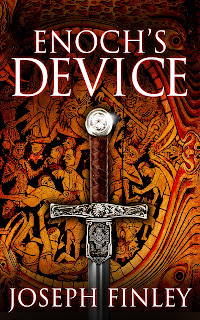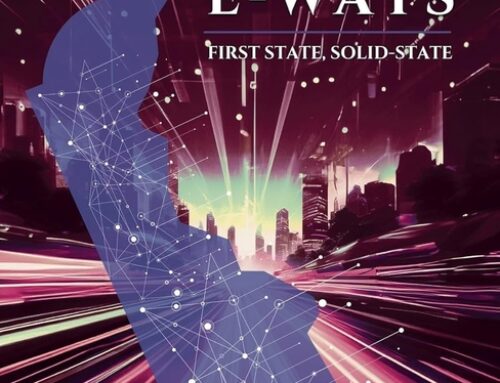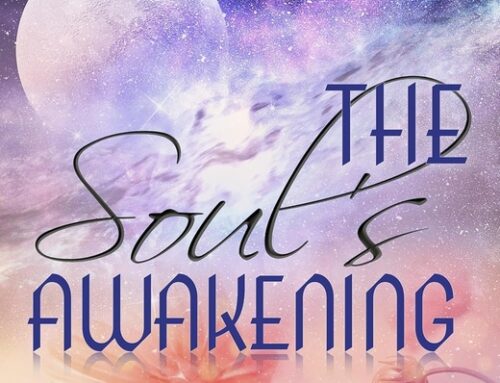 Derry, Ireland, 997 A.D. One stormy midday, a black-hulled ship moors near the local monastery, setting down the towering Bishop Adémar, three priests, and a small army of Frankish soldiers and vicious dogs. The black-robed bishop tells the assembled monks he’s here to find a murderous heretic in their midst. Suspicion soon falls on the freethinking brother Dónall mac Taidg who studied in Reims and has long been the guardian of an orphaned boy – Ciarán, now a twenty-year-old monk and scribe. Ciarán can scarcely believe his mentor is involved in the kind of villainy alleged, but he soon uncovers evidence that Dónall was not only forewarned of the bishop’s manhunt by a coded manuscript sent from France, but that he is also a master of the Fae arts – an ancient power allowing its adherents to turn the elements of nature to their will.
Derry, Ireland, 997 A.D. One stormy midday, a black-hulled ship moors near the local monastery, setting down the towering Bishop Adémar, three priests, and a small army of Frankish soldiers and vicious dogs. The black-robed bishop tells the assembled monks he’s here to find a murderous heretic in their midst. Suspicion soon falls on the freethinking brother Dónall mac Taidg who studied in Reims and has long been the guardian of an orphaned boy – Ciarán, now a twenty-year-old monk and scribe. Ciarán can scarcely believe his mentor is involved in the kind of villainy alleged, but he soon uncovers evidence that Dónall was not only forewarned of the bishop’s manhunt by a coded manuscript sent from France, but that he is also a master of the Fae arts – an ancient power allowing its adherents to turn the elements of nature to their will.
Dónall convinces Ciarán that this power is no heresy, but rather inherited from angels banished to Earth in Antediluvian times. He also senses Bishop Adémar’s purpose is not what it seems: his real intention is to seize a book secreted in Dónall’s cell. The book contains coded references to “Enoch’s device”: an angelic weapon that can save mankind from the imminent unleashing of “the beasts of the apocalypse” predicted to occur a thousand years after Christ’s birth. Adémar proves willing to slaughter any monk who stands in his way. Worse, his ultimate goal may not be to save the world but to hasten its destruction. Dónall knows he needs help from friends in France. He flees with Ciarán in tow, and so begins a race across Europe to find Enoch’s device before time runs out. The victor will determine the fate of mankind…
Enoch’s Device is a wonderfully imagined, vividly described, alternately lyrical and violent romp of a novel that should give lovers of historical fantasy just the kind of fix they’re looking for.
There’s a lot to like here. Finley drops the reader immediately into the action, allowing the characters to reveal and explain themselves as the story unfolds. The prose style is clean and functional without being drearily plain. Finley isn’t afraid of complex images or longer sentences, and he has the skill to wield them usefully. Where extended narrative sections are required, as in describing the historical settings, Finley calls on extensive research and deploys some well-chosen facts and delightful visual details to immerse the reader deep in the historical moment. The descriptions of Poitiers and Córdoba are especially impressive. They had me rushing off to Google Earth to see how much of their medieval magnificence survives today.
The numerous fight sequences and other moments of high physical drama are well choreographed and appropriately bloodthirsty, with clanging swords, severed limbs and spilling viscera aplenty. There is an especially vivid and well-realised scene, around the middle of the novel, in which Ciarán is possessed by a demon. With action sequences, it’s always a balance between pace and detail: too much detail saps the urgency, but too little leaves the reader floundering, not really “seeing” what’s going on, as in a badly edited film. Finley gets the balance just right.
I also appreciated the novel’s blending of religious and quasi-religious traditions. Finley combines astrology, Celtic myth, and the Jewish and Christian faiths to draw out commonalities and connections, arguing, it would seem, for a universal origin. Better yet, he does so in a way that is convincing: it doesn’t feel forced or faintly ludicrous as the claimed connections do, for example, in The Da Vinci Code.
If I was disappointed by anything in this novel it was, occasionally, the plotting and pace. The story deploys the useful “ticking clock”, with Dónall, Ciarán and their companions racing Bishop Adémar to find Enoch’s device. But they have several months, apparently, to do this before the beasts of the apocalypse are unleashed, so the urgency waned for me. Moreover, while I know this is fantasy fiction and therefore anything is feasible, at the back of my mind was the niggling awareness that the world didn’t actually end in the tenth century, so the stakes felt low. All of that need not matter if we care deeply about the characters. But despite some good backstories for Ciarán, Dónall and especially for their eventual female companion, Alais, I didn’t feel close enough to them emotionally – I didn’t get deep enough inside them, as people – to be passionately concerned for their fates.
This may well be a symptom of the kind of book this is, where puzzles need to be decoded by the characters. The revealed secrets drive the plot, rather than the characters themselves having complex motivations that define the story’s arc. There are also some detours away from the main plot which may have contributed to my sense that the novel was treading water in a few of places, e.g. the long explanation of Alais’ marriage, and a rather detailed section in Chapter 37 giving the background to Islamic rule in Spain. These detours do eventually contribute to the story. But in the reading they felt like pauses, and a genre novel needs to maintain a compelling direction all the way through or it risks losing the reader’s interest.
In the end, however, Finley draws all his strands together into a masterfully staged and bloody final conflict, with appropriate heroics, sacrifices and vast supernatural spectacle. The final seven chapters that comprise Part V are wonderful. The denouement did feel a little perfunctory – I’d have liked a few pages more to calm myself down! – but I’m sure that’s a deliberate move: it sets things up for a sequel that you’ll probably want to order as soon as it’s available. Finley closes out with an interesting Historical Note explaining how real events have been adapted and their chronology shifted to support the story, as well as showcasing his obvious passion for history and a rather delightful erudition. This Atlanta lawyer sounds like the kind of guy you’d like to have a long lunch with to talk through all of this some more. The book is also nicely packaged, with a professional-looking cover design, good layout and minimal typos. I suspect a professional cover artist and editor have both had a hand in this book, which is great to see in a self-published work.
In summary, Enoch’s Device is a very enjoyable historical fantasy from a talented new writer, and I look forward to seeing how the story of Ciarán develops in the sequel(s).
4 stars
Links
Get an Editorial Review | Get Amazon Sales & Reviews | Get Edited | Get Beta Readers | Enter the SPR Book Awards | Other Marketing Services






















Leave A Comment